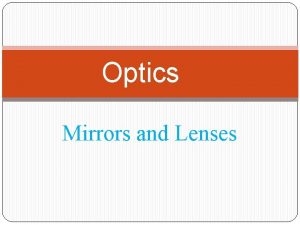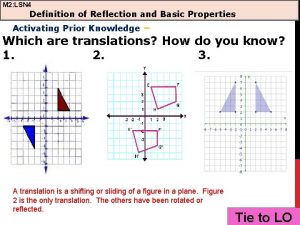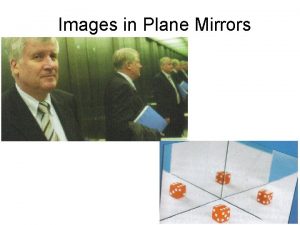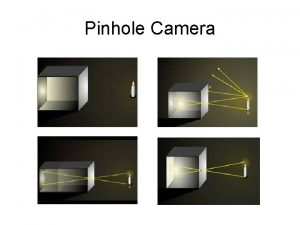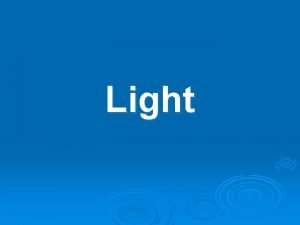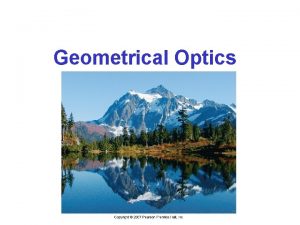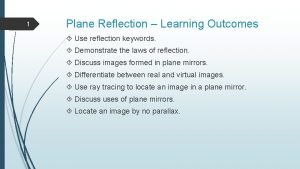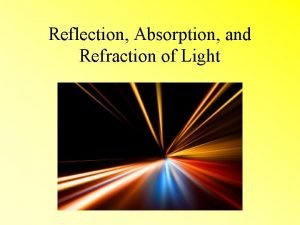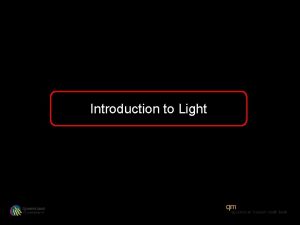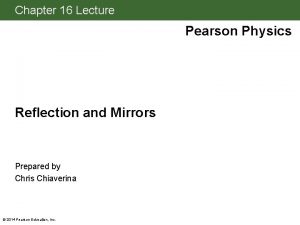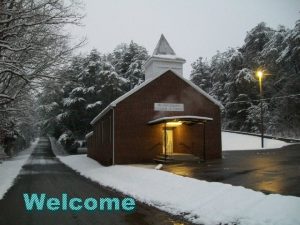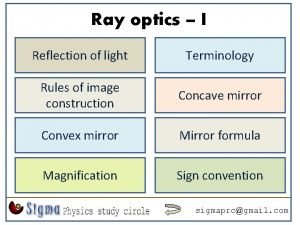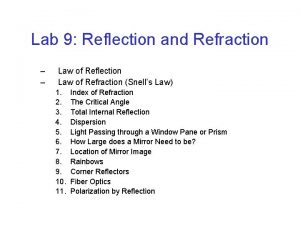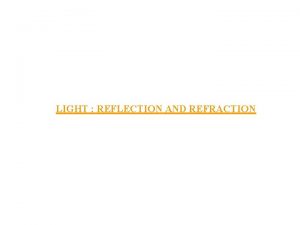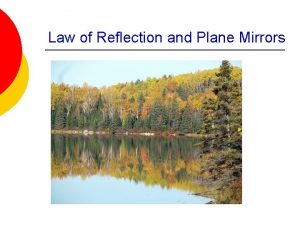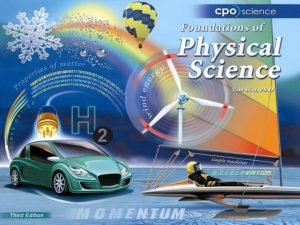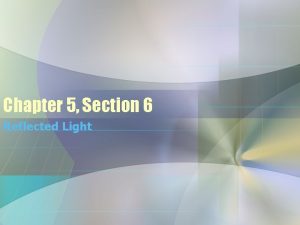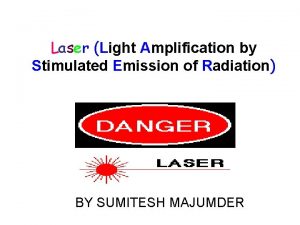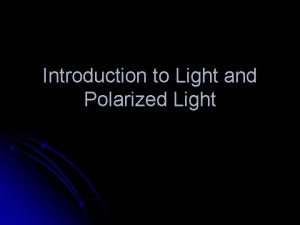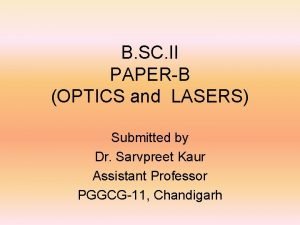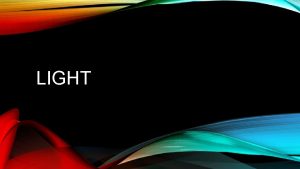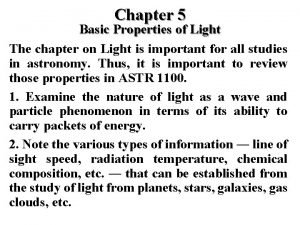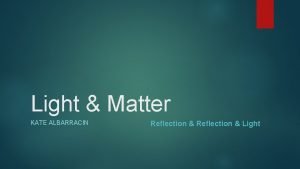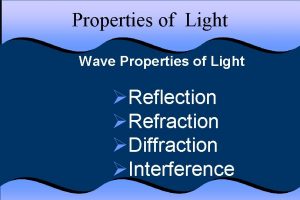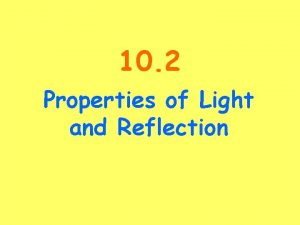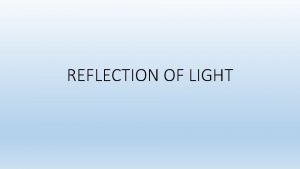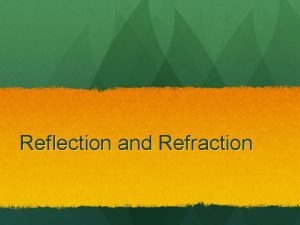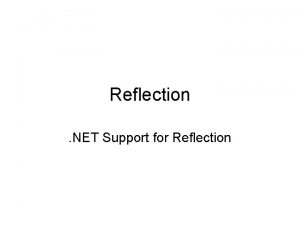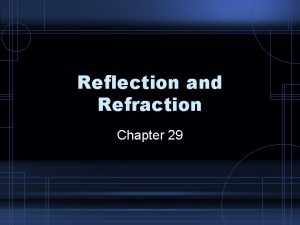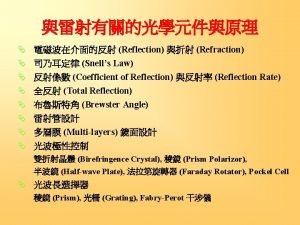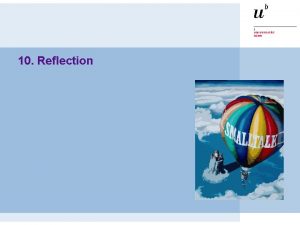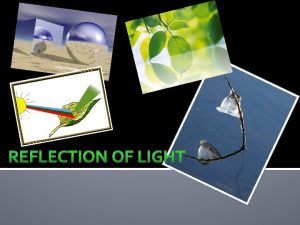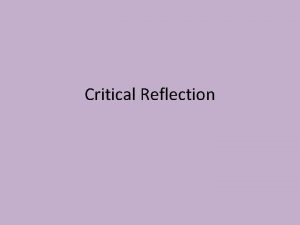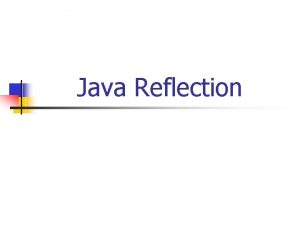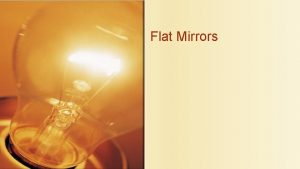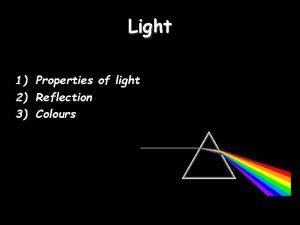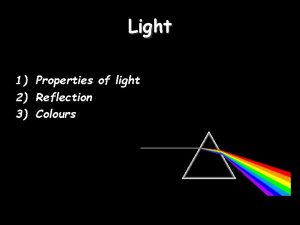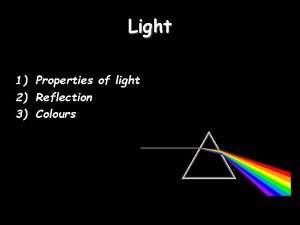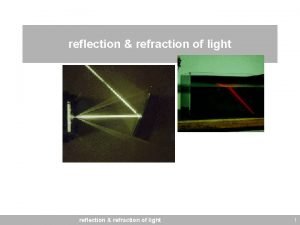Light 1 Properties of light 2 Reflection 3































- Slides: 31

Light 1) Properties of light 2) Reflection 3) Colours

Part 1 – Properties of Light travels in straight lines: Laser

Light travels VERY FAST – around 300, 000 kilometres per second. At this speed it can go around the world 8 times in one second.

Light travels much faster than sound. For example: 1) Thunder and lightning start at the same time, but we will see the lightning first. 2) When a starting pistol is fired we see the smoke first and then hear the bang.

We see things because they reflect light into our eyes: Homework

Luminous and non-luminous objects A luminous object is one that produces light. A non-luminous object is one that reflects light. Luminous objects Reflectors -The Sun - Lamps - Lights - Lasers - Campfires -The Moon - Mirrors - People - Objects

Shadows are places where light is “blocked”: Rays of light

Properties of Light summary 1) Light travels in straight lines 2) Light travels much faster than sound 3) We see things because they reflect light into our eyes 4) Shadows are formed when light is blocked by an object

Part 2 - Reflection from a mirror: Normal Reflected ray Incident ray Angle of incidence Angle of reflection Mirror

The Law of Reflection Angle of incidence = Angle of reflection In other words, light gets reflected from a surface at THE SAME ANGLE it hits it. The same !!!

Clear vs. Diffuse Reflection Smooth, shiny surfaces have a clear reflection: Rough, dull surfaces have a diffuse reflection. Diffuse reflection is when light is scattered in different directions

Using mirrors Two examples: 2) A car headlight 1) A periscope

Flat Mirrors Image is VIRTUAL, UPRIGHT, UNMAGNIFIED

Spherical Mirrors - Concave C F Image is REAL, INVERTED, and DEMAGNIFIED !!!

Spherical Mirrors – Concave Object Inside the Focal Point C F Image is VIRTUAL, UPRIGHT, and MAGNIFIED

Spherical Mirrors - Convex C F Image is VIRTUAL, UPRIGHT, and DEMAGNIFIED

Colour White light is not a single colour; it is made up of a mixture of the seven colours of the rainbow. We can demonstrate this by splitting white light with a prism: This is how rainbows are formed: sunlight is “split up” by raindrops.

The colours of the rainbow: Remember: Roy G. Biv !!! Red Orange Yellow Green Blue Indigo Violet

Light from the Sun The light from the sun contains a grand mixture of electromagnetic waves of varying frequency (i. e. wavelength) The spectrum of light is characteristic of the TEMPERATURE of the sun!

Wavelengths of Light Red Light – l = 680 nm Green Light - l = 500 nm Blue Light - l = 470 nm

Adding colours White light can be split up to make separate colours. These colours can be added together again. The primary colours of light are red, blue and green: Adding blue and red makes magenta (purple) Adding red and green makes yellow Adding blue and green makes cyan (light blue) Adding all three makes white again

Seeing colour The colour an object appears depends on the colours of light it reflects. For example, a red book only reflects red light: White light Only red light is reflected

A pair of purple pants, in addition to being ugly, would reflect purple light (or red and blue, as purple is made up of red and blue): Purple light A white hat would reflect all seven colours: White light

Using coloured light If we look at a coloured object in coloured light we see something different. For example, consider the outfit below – I mean, from a physics standpoint, not as a fashion choice: Shirt looks red White light Shorts look blue

In different colours of light this kit would look different: Red light Shirt looks red Shorts look black Shirt looks black Blue light Shorts look blue

Using filters Filters can be used to “block” out different colours of light: Red Filter Magenta Filter

The Doppler Effect

The Doppler Effect The apparent frequency of a sound changes due to the relative movement of the source and/or observer http: //www. falstad. com/ripple You. Tube - Fire Engine siren demonstrates

Calculating the change in frequency Imagine a car emitting a continuous sound, speed = v, frequency = f Sound source frequency f Observer

Stationary Source In a time Δt, the observer will receive fΔt waves if the source is at rest Number of waves per second Sound source frequency f These waves will occupy a distance vΔt time) Time in seconds Observer (distance = speed x

Moving Source If the source is now moving with speed us towards the observer us The same number of waves will have been emitted in time Δt but this time the waves will occupy a distance of vΔt - u sΔt Distance moved by source Distance moved by waves
 Regular reflection
Regular reflection Light light light chapter 23
Light light light chapter 23 Light light light chapter 22
Light light light chapter 22 Light light light chapter 22
Light light light chapter 22 Definition of reflection and basic properties
Definition of reflection and basic properties Salt of a plane mirror
Salt of a plane mirror Pinhole camera reflection
Pinhole camera reflection Reflection light analogy
Reflection light analogy Light strikes
Light strikes Mirror formula
Mirror formula Use of reflection of light
Use of reflection of light Reflection refraction absorption
Reflection refraction absorption Why can we represent light rays using a ruler
Why can we represent light rays using a ruler Reflection of light
Reflection of light Reflection of light example
Reflection of light example Salt and light reflection
Salt and light reflection Terms used in reflection of light
Terms used in reflection of light Light reflection experiment
Light reflection experiment Refraction through a rectangular glass slab
Refraction through a rectangular glass slab Characteristic of light
Characteristic of light Point of incidence
Point of incidence Extensive examples
Extensive examples Physical property and chemical property
Physical property and chemical property 5 properties of light
5 properties of light What are the 7 properties of light
What are the 7 properties of light 5 properties of light
5 properties of light Characteristics of lasers
Characteristics of lasers Population inversion laser
Population inversion laser Properties of light definition
Properties of light definition Properties of laser light
Properties of laser light Is brightness a property of light
Is brightness a property of light Basic properties of light
Basic properties of light
